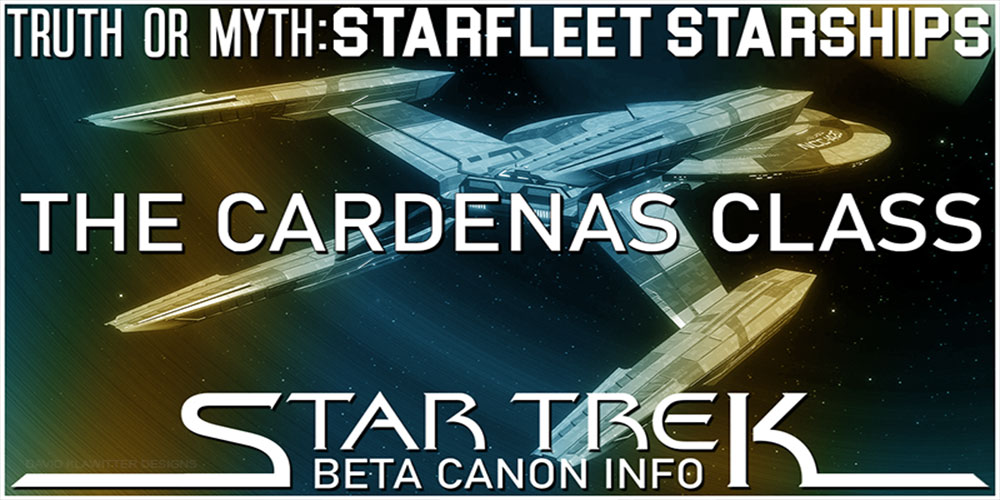Hello and welcome to another episode of Truth OR Myth Beta Canon, a Star Trek web series that dives into the history of any given topic using Beta Canon sources and my imagination to fill in the gaps. In today’s episode, we’re looking at the Cardenas Class, as first seen in the Star Trek: Discovery to better understand its place in Star Trek History.
This video is an update and reworking of a much older video I once made before I had access to the much better Space Engine program, and even before these Beta Canon videos truly existed. So, I thought I’d pull this one out of the vault, update and rewrite it to conform to my now established style and give you good “Tri-Naries” the video you deserve in the class.
Of course, As always, because this IS a Beta Canon video, all information re-laid should pretty much be taken with a grain of stardust, and only considered a little bit of Star Trek Fun
During the early to mid-23rd century, Starfleet Command would begin to experiment with several 4 warp nacelle starship designs…
One of these designs, the Cardenas class, would prove itself a valuable addition to Starfleet Command and the United Federation Of Planets. But what do we know about this unusual class?
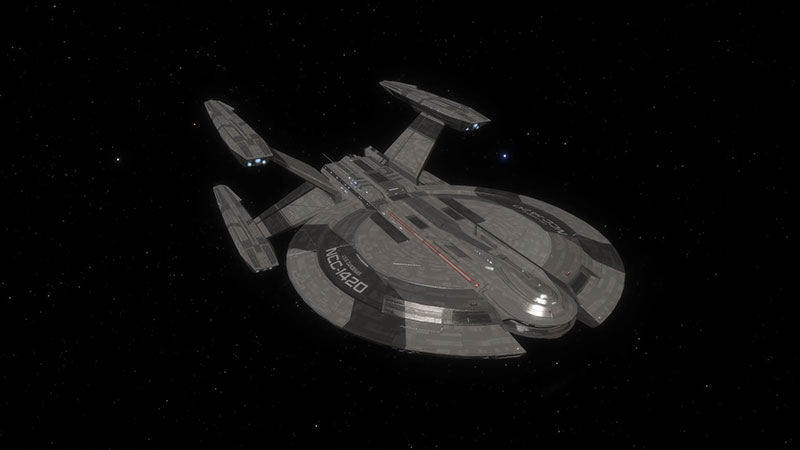
Since the conception of Starfleet’s First Starship Classes, Starfleet’s Core of Engineers had been debating the usefulness of additional warp nacelles above and beyond the standard 2 nacelles Starship Designs that Starfleet had been used to and known for.
There were clear advantages to having more than 2 Nacelles, such as still being able to achieve higher warp speeds if a nacelle was rendered inoperative, a situation which Starfleet Command itself looked favourably upon.
When all nacelles were operating it did give a slight boost to a starships speed as the warp field generated by them could be focused more tightly and operate at higher frequencies.
However, there were also rather large downsides, those being, even more, resources poured into these starship designs, along with requiring even more power to be generated by these Starship’s Warp Cores and to most in the Federation, these design improvements seemed dubious at best.
The mid-23rd century was a time of amazing development for Starfleet.
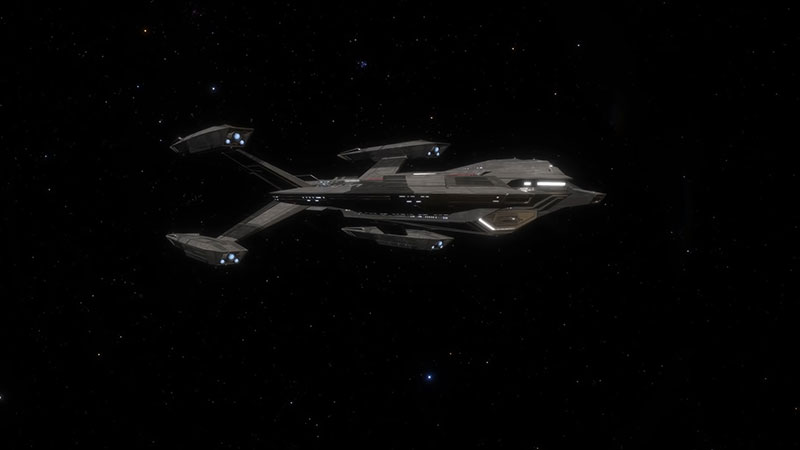
At the age of 24, Dr Richard Daystrom made his breakthrough in Duotronic Technology, and this breakthrough would eventually lead to classes such as the Constitution Class becoming a reality.
But in 2243, Starfleet Command needed a starship class, to test out this new technology. And with its space frame already in place, just begging for new technology, plans for the Cardenas Class would be altered to include this revolutionary technology.
At a length of approximately 411 meters, the Cardenas Class would be designed to be operated by 300 officers and crew members.
Because of its new Duotronic Components, the Cardenas Class would be the first Starfleet Vessel Class to break the warp seven barrier, as Duotronics allowed for more complicated and faster control over a Starship’s Warp Fields.
Initially expected to have an absolute maximum speed of warp factor of 7, the Cardenas class would surprise everyone at Starfleet Command by also being the first Starship Class to achieve and maintain a warp factor of 8. Though travelling at that speed was determined to be detrimental and dangerous to the ship, nevertheless, it was a feat that would go down in Starfleet History.
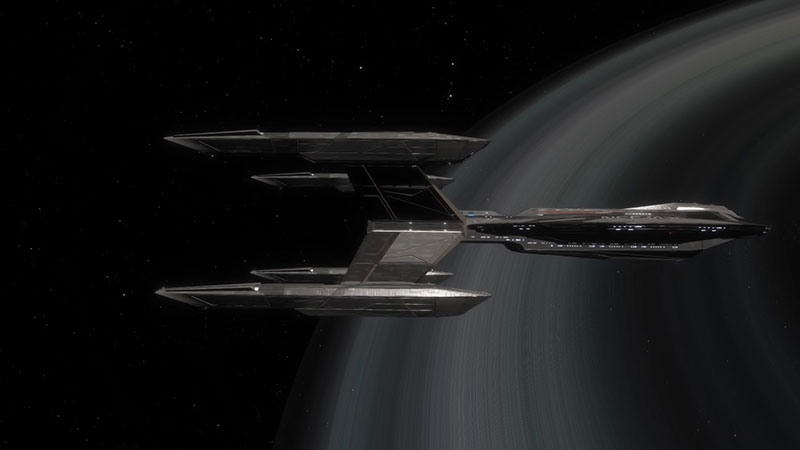
As a result of these warp trials, however, the Cardenas Class would end up with a standard cruising speed of warp factor 6 and an emergency cruising speed of warp factor 7 making this class one of Starfleet’s fastest classes of the time.
This class would also have improved weapons capabilities.
Again, utilizing the Cardenas Class as a testbed for new technologies, this class would be the first to include the new Phaser Emitter System, a weapons technology being tested by this class for its inclusion in the upcoming Constitution Class.
Up to this point in Starfleet history, all starships were equipped with the latest Phase Cannon Systems. And although powerful, the intermittent nature of the Phase Canon beam was seen as a downside of that system.
So, when Starfleet Weapons Design Engineers came up with a way for a starship to emit a continuous beam of destructive Phaser energy, Starfleet was only too happy to oblige and agreed to have the Cardenas Class equipped with this new system, along with the standard Phase cannon Systems of the time.
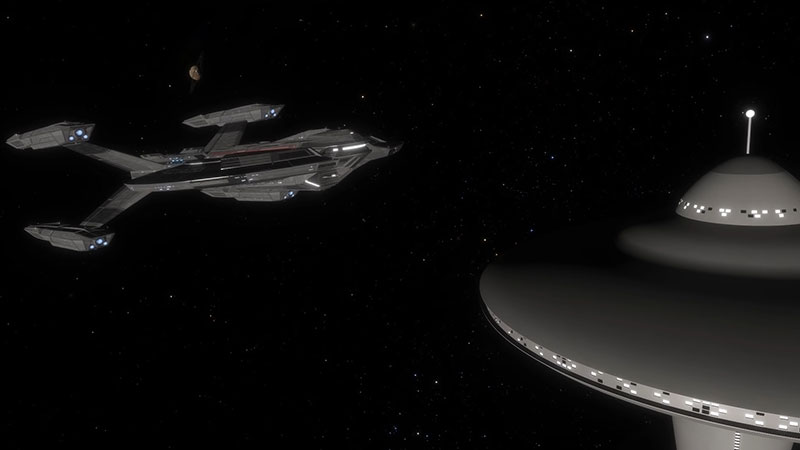
All other systems, Including shield and torpedo technologies, would remain the same as what was installed in most other classes.
The Cardenas Class would contain 3 Personnel Transporters and 3 Cargo Transporters, as well as 2 Shuttlebays stocked with the latest Shuttlecraft and workhorse auxiliary vehicles.
The Cardenas Class, at least at the time, would be considered a mixed bag for Starfleet’s expectations. Though wowing the power that is with its warp-speed capabilities, it didn’t impress much in any other areas.
The New Phaser Systems were stronger and more efficient than their canon counterpart, but that system raised a few questions in Starfleet’s Core of Engineers. The main one being, if these systems were installed into a duo nacelle design, would there be a significant difference in performance to warrant this class 4 nacelle design.
This would be a question that would not take long to be answered, as in late 2244, Starfleet newest starship design, the USS Constitution, would be launched from Earth and would ultimately prove that a duo nacelle starship designed with all these new Duotronic systems could perform just as well as the Cardenas Class design.
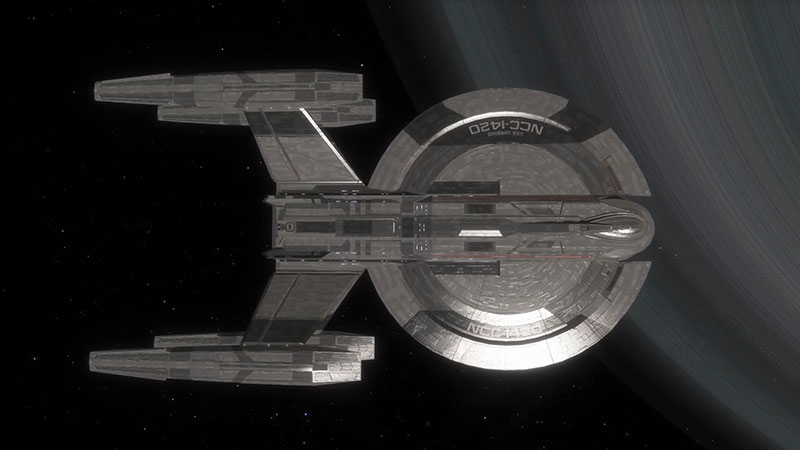
The speed increases, which had initially been a wow factor for the class became disappointing when the USS Constitution herself was able to reach and maintain warp factor 8 with much less danger to the starship itself than had been experienced by the Cardenas Class.
This meant that although the Constitution Class would have the same Cruising Speed as the Cardenas Class, that being a warp factor of 6, the Constitution Class would end up outdoing the Cardenas Class by having an emergency maximum Speed of warp factor 8.
There was also one other unintended side effect of the Constitution Class, that being its design aesthetics.
Up to this point in its design history, Starfleet starships were still boxy looking, with warp nacelles that at times, ended up seeming to ride off into infinity.
However, the Constitution Class did away with the boxy look, going back to an earlier style of cylindrical shaped nacelles, which gave the Constitution Class a feeling of being the future of Starfleet Starship Designs.
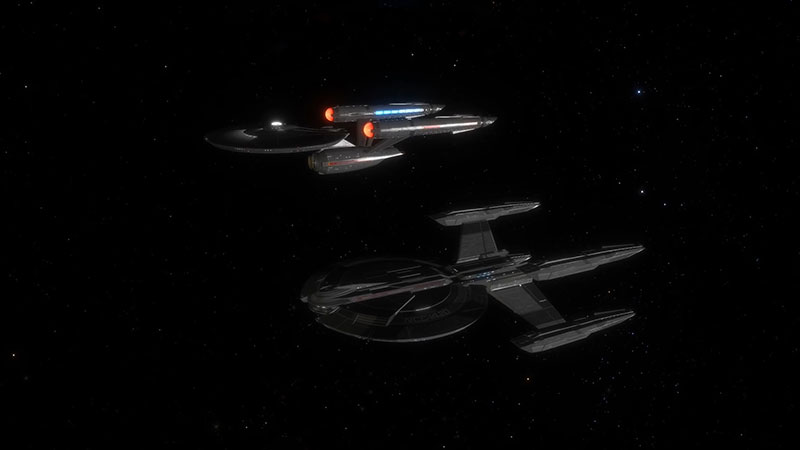
As a result, Starfleet immediately ended all its standing order on most classes being built at the time, including the Cardenas Class, making the unprecedented decision to commission redesigns of all its ships based on the Constitution Class aesthetics.
So, the Cardenas Class would only have a limited run in its production, churning out less than 1/4 of Starfleet’s original order before production was halted. This, however, would also have an unintended side effect for the class itself.
Because so few existed, and due to its radically different design qualities, many officers in Starfleet would seek out a post on vessels of this class, making it almost as vigorously sought out as the Constitution Class.
Although this would not save the class from its eventual decommissioning by the year 2266, it would reinforce Starfleet’s continual experimentation into 4 Nacelle Designs. This, in turn, would lead directly to the development and production of the Constellation Class, a class that herself would make a mark in Starfleet History.
And so, although a minor footnote in Starfleet Starship design historical texts, The Cardenas Class would nonetheless be an important addition to Starfleet’s Starfleet…
Earning this class its place, in Starfleet History…
What to help the channel reach Warp Factor 8? Then just click HERE to become a channel Patron…
Watch The Latest Truth Or Myth Below
Thank you for watching today’s episode of Truth or Myth Beta Canon, what do you think of the Cardenas Class, and the historical narrative that I’ve created here. Do you want to see more videos like this one? Well leave your comments in the section below and don’t forget to like the video and subscribe to the channel.
Thanks again for watching, Live long and prosper…

